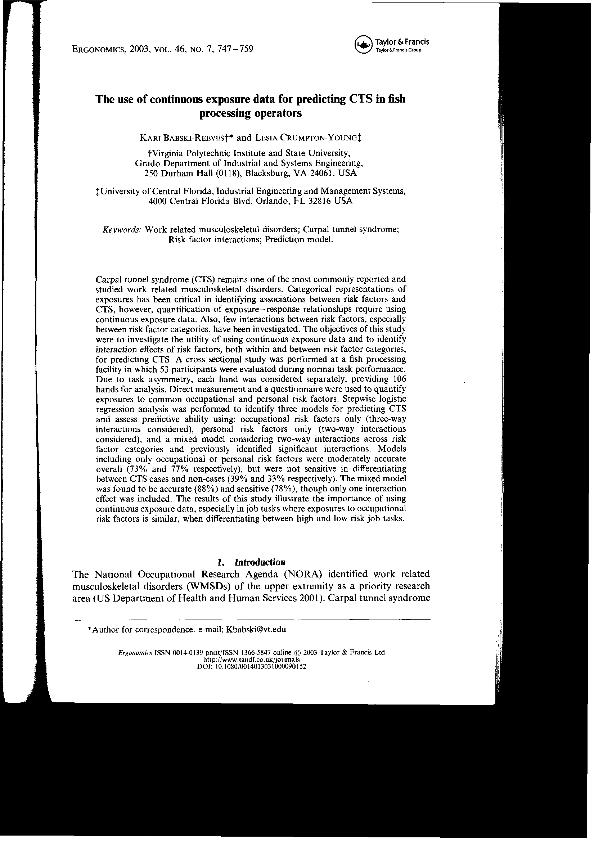The Use of continuous exposure data for predicting CTS in fish processing operators

Contenido multimedia no disponible por derechos de autor o por acceso restringido. Contacte con la institución para más información.
| Tag | 1 | 2 | Valor |
|---|---|---|---|
| LDR | 00000nab a2200000 i 4500 | ||
| 001 | MAP20071505784 | ||
| 003 | MAP | ||
| 005 | 20080418124824.0 | ||
| 007 | hzruuu---uuuu | ||
| 008 | 040923e20030601gbr|||| | |00010|eng d | ||
| 035 | $a6800012720 | ||
| 040 | $aMAP$bspa | ||
| 084 | $a875 | ||
| 100 | 1 | $0MAPA20080237479$aBabski-Reeves, Kabi | |
| 245 | 1 | 4 | $aThe Use of continuous exposure data for predicting CTS in fish processing operators$cKari Babski-Reeves, Lesia Crumpton-Young |
| 520 | 8 | $aCarpal tunnel syndrome (CTS) remains one of the most commonly reported and studied work related musculoskeletal disorders. The objectives of this study were to investigate the utility of using continuous exposure data and to identify interaction effects of risk factors, both within and between risk factor categories, for predicting CTS | |
| 650 | 1 | 1 | $0MAPA20080622336$aSíndrome del Túnel Carpiano |
| 650 | 1 | 1 | $0MAPA20080585266$aFactores de riesgo |
| 650 | 1 | 1 | $0MAPA20080592059$aModelos predictivos |
| 650 | 1 | 1 | $0MAPA20080591717$aLesiones musculares |
| 700 | 1 | $0MAPA20080280857$aCrumpton-Young, Lesia | |
| 740 | 0 | $aErgonomics | |
| 773 | 0 | $tErgonomics$dLondon and Washington$gVol. 46, nº 7, June 2003 ; p. 747-759 |

